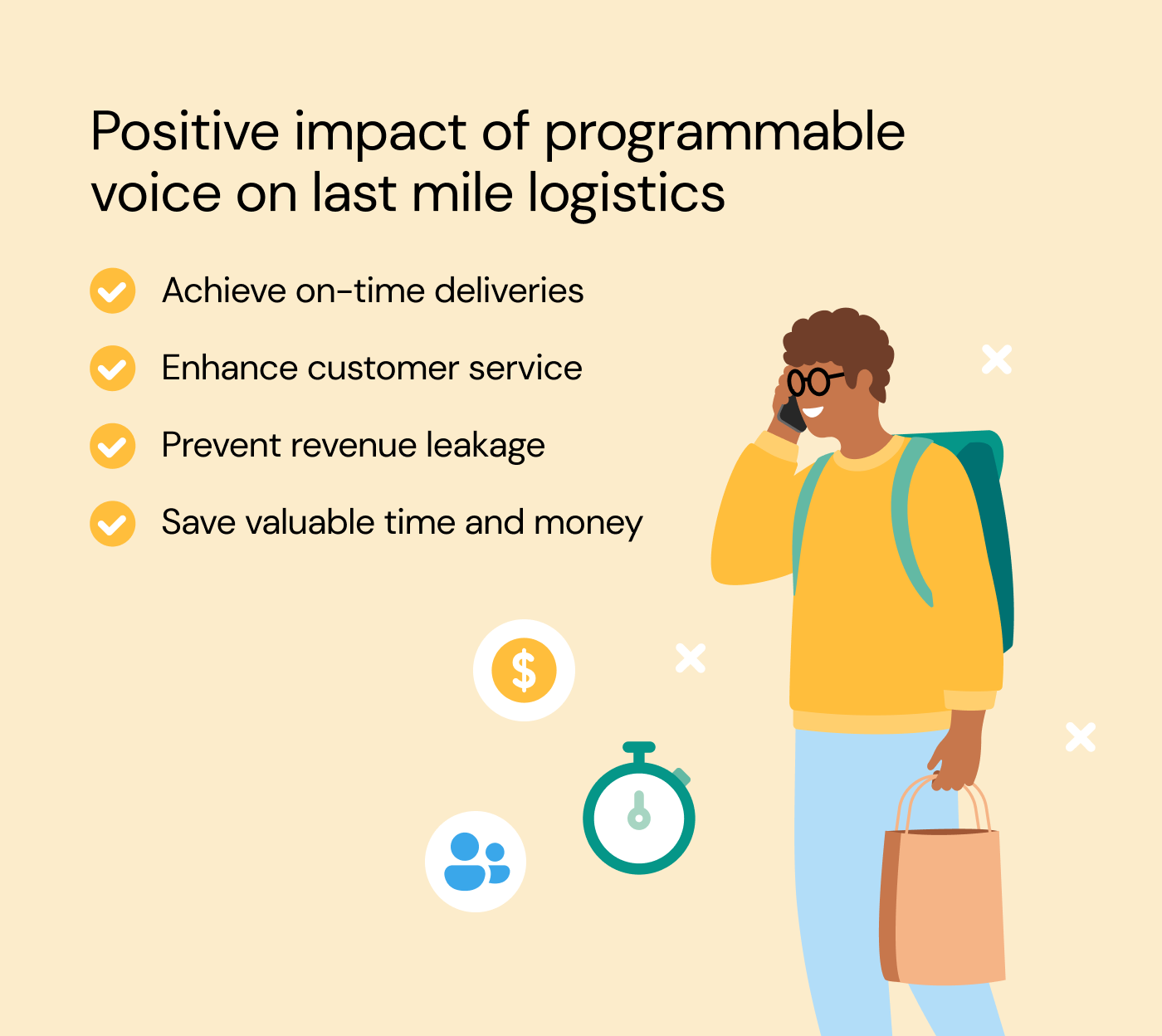The gig economy became popular in 2008-09 when the financial crisis forced many workers into task-based labor. As the pandemic raged in 2020, it experienced 33% growth.
What is a gig economy? According to Investopedia, it’s “a segment of the service economy based on flexible, temporary, or freelance jobs, often involving connecting clients and customers through an online platform.”
The ballooning gig economy is expected to surpass the full-time workforce by 2027. This phenomenon has prompted changes in business strategies to help companies deal with labor shortages and rising costs.
It shouldn’t come as a surprise that this trend has heavily impacted the logistics industry. Despite the booming growth it experienced, several new challenges have emerged. The lack of drivers, increased customer demand for speedy and immediate deliveries, and unrecognizable driver phone numbers leading to unanswered calls dramatically impact expenses. For example, last mile delivery still accounts for 53% of total shipping costs. Even worse, 84% of consumers won’t shop with a retailer after a bad delivery experience, with 98% saying the delivery experience is “essential for brand loyalty”.
One thing is clear: reducing costs during the last mile can have a powerful impact on any company’s bottom line.
So, how can last mile delivery companies reduce costs without impacting the customer experience? For top companies like DoorDash, Uber, and Instacart — programmable voice is the answer.
How programmable voice reduces expenses
Voice technology is part of the answer. After all, customers want to instantly connect with a company when they need help. We also know that 95% of customers want to be able to switch instantly from messaging to voice.
This is where programmable voice shines, providing a customizable platform for companies looking to achieve on-time deliveries, enhance customer service, prevent revenue leakage, and save valuable time and money.
What exactly is programmable voice? Simply put, it’s an easy way to add voice capabilities to any system or application. You can enable easy click-to-call functionality in your app, calling from an app to any phone number, record and transcribe calls for back-end documentation, or post processing purposes, and provide notifications using multiple channels for updates.
Best of all? These features work together to increase delivery speed, save costs, and make your customers happy!
The last mile delivery problem
Same-day, next-day, and three-day shipping options have become the new standard, creating higher customer expectations and calling for streamlined operations.
Meeting these expectations has created a variety of last mile delivery challenges, including:
- Failed deliveries because a driver can’t find the correct address
- Delayed deliveries disappointing a customer without notice
- Unanswered calls by the customer when receiving a call from a driver with an unknown number
- Growing customer expectations for fast and rapid service
- Keeping drivers happy by providing them with the tools needed to complete deliveries and ensure customer satisfaction
The good news is many of these challenges can be overcome with well-executed programmable voice services.
Programmable voice use cases for last mile delivery
Many interactions happen between customers and employees when it comes to logistics and last mile deliveries.
In a perfect world, everything works as planned. But sometimes unforeseen delays can derail a delivery, directly impacting customer experience.
How in-app calling improves customer experience
You may be wondering: how can you ensure seamless communication at all stages of the delivery process? For many companies, this means integrating the programmable voice in-app calling function to reduce customer friction using a voice API.
In-app calling makes it incredibly easy for delivery drivers and customers to instantly connect through a dedicated application.
Drivers and customers can communicate through the app using voice or text, making it the perfect solution for quick communications, updates, and unexpected changes. Consider these scenarios:
- A customer orders food but realizes they forgot to add an important detail to the order. They can quickly message or call the delivery driver to communicate this request.
- A ride-sharing driver can call a customer to provide an update if a road is closed or they cannot find the pickup location.
- A grocery delivery app can chat with customers to recommend replacements for out-of-stock products.
- A delivery driver can call a customer if they need a gate code for an apartment complex or secure building.
- A customer can give permission to a driver to leave a package in a specific location if they are unavailable
The bottom line? Programmable voice allows a way to better control deliveries — by verifying call attempts, times, and duration to assure accurate and timely delivery while validating attempts actually happened and were successful.

What are the benefits of programmable voice in last mile delivery?
Why have so many companies used programmable voice to enhance their apps and services? Some of the most significant benefits of programmable voice systems in the last mile delivery include:
- Improving customer service: Take things further by incorporating features like call recording and automated transcription. In addition to maintaining a record of any bad behavior, these features make it far easier for support to do their job. Simply analyzing a transcript will provide all the transaction details — avoiding customer outreach and questioning.
- On-time deliveries: In some cases, the delivery person needs to contact the customer for the delivery to happen. This makes it crucial for all customer calls to be branded properly to help distinguish them from robocalls. Ensuring the delivery comes on time increases customer satisfaction and reduces costs. Smart voice solutions are the answer.
- Prevent revenue leakage: By allowing drivers and customers to communicate without revealing phone numbers, you ensure they cannot contact one another after a delivery is made. This helps prevent revenue leakage by making it more challenging to facilitate backdoor deals, like a ride-sharing driver encouraging a passenger to contact him directly the next time they need to go somewhere.
Incorporating programmable voice into your business with Sinch
Adding calling to your customer experience is easy with Sinch’s robust APIs and SDKs.
Sinch has the tools your company needs to solve the core issues complicating last mile delivery, enabling you to provide a better customer experience, and reduce last mile delivery costs.
Choose the right path to a better user experience
The gig economy has quickly become the go-to solution for solving the last mile delivery’s pain points — but it is not without its challenges. Legacy logistics and shipping companies have also had growing pains as customers are promised much shorter time frames.
Fortunately, these problems are easily overcome with a highly customizable programmable voice solution. With the right technology, you can reduce costs, make more successful deliveries, and improve customer satisfaction.
Are you interested in exploring how programmable voice and our voice API can reduce costs and boost customer satisfaction? Reach out to one of our experts and join the top gig economy companies using programmable voice to create the best possible customer experience.



